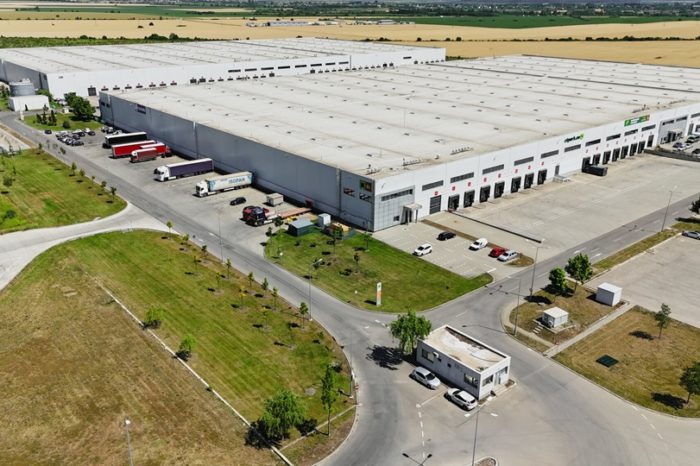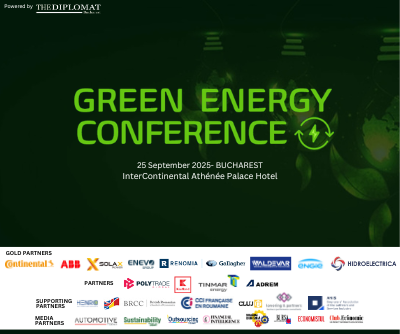Could the Trump Administration Lead to Lower Energy Prices in Europe?

Opinion by Balazs Kotnyek, Partner and Associate Director, Boston Consulting Group
Recently, not a day passes without reading about why President-elect Donald Trump’s second presidency will be bad for the world—and especially for us here in Europe. There may be some truth in these opinions, but now I will try to present a more optimistic vision regarding the energy transition. In this scenario, the intensity of global climate protection does not decrease significantly, and Europe may even come out ahead from the changes. It’s not certain that this will happen, but let’s not give up hope!
On climate and energy policy, Trump said four things during the campaign:
- The U.S. will introduce high protective tariffs, primarily on Chinese imports, including solar panels, batteries, and similar renewable technologies.
- The new U.S. government will reduce financial support for green energy.
- Regulatory restrictions will be introduced for new offshore wind developments.
- U.S. natural gas production and exports will be accelerated.
Let’s set aside the justified caution regarding Trump’s promises and assume these steps will happen more or less as announced. Let’s examine what effect they might have on Europe.
U.S. tariffs could make European renewable investments more competitive
Currently, solar panels and batteries are primarily manufactured in Chinese factories. In recent years, enormous production capacities have been built up, which can only cover their high fixed costs if large quantities are produced continuously. Growing volumes drive down unit prices, making the installment of solar plants or energy storage cheaper.
If Chinese products become less favorably marketable in the U.S., i.e., demand there decreases, it could trigger a chain reaction:
- Chinese factories will try to sell their freed-up capacities elsewhere.
- European buyers could gain a better bargaining position and buy at lower prices.
- Their investments could yield better returns.
- Investors might, therefore, prefer Europe as a location for renewable projects.
- The spread of renewables in Europe could accelerate further.
Of course, all of this is true only if the EU does not impose high tariffs on Chinese technology. If we follow the U.S. in this, the advantage will not be reaped here but in Asia, the Middle East, or Africa, where cheap Chinese solar panels will still be gladly bought.
The reduction of U.S. subsidies makes the European Green Deal more favorable
One of the main achievements of the Biden presidency was the adoption of the Inflation Reduction Act (IRA), which, despite its name, primarily provides targeted tax benefits for green investments. Nearly $400 billion in subsidies over several years was set aside, which analyses suggest could stimulate investments worth up to $1 trillion in renewable and low-carbon technologies. This is comparable in scale to the European Green Deal, but while the U.S. tax benefits are relatively simple and applicable, the European program offers a complex, slow, and cumbersome process. It’s by no coincidence that the prevailing view is that the U.S.’s IRA more effectively stimulates the necessary investments. This is particularly true for innovative, early-stage technologies such as small modular reactors (SMR) or carbon capture and storage (CCS).
The new American government will likely reduce the tax benefits available through the IRA to allocate the saved funds to maintaining Trump’s previously introduced general tax cuts. It is unlikely that the IRA will be completely eliminated, as most of the subsidies granted so far have gone to Republican voting districts, and energy companies supporting Trump are also active in nuclear, biogas, geothermal, and CCS projects. There is a much higher chance of cuts in support for renewable energy (solar and wind power), industrial projects (e.g., carbon-neutral steel or fertilizer production), and electric mobility.
The good news is that innovative technologies (such as CCS or geothermal power plants) are expected to remain in the circle of beneficiaries, where U.S. developments can be globally useful during the energy transition. The bad news is that this will not happen for technologies excluded from the support scheme.
But this is where Europe’s role can come into play. While the IRA has been a more effective support system than European programs, even a complex system is better than no support. If the European Green Deal becomes more established, simpler, and moves in a direction that better supports competitiveness (e.g., reducing energy costs or fostering innovation), it could become a globally leading support system.
European wind energy could boom
Offshore wind energy companies have not had good years recently. Increasing costs, ever more complex technological solutions, and regulatory uncertainties have led investors to redirect their money elsewhere and repeatedly cancel wind energy projects in Europe or the U.S.
Trump has loudly criticized offshore wind energy several times and promised not to approve new projects after his election. This increases the value of European project opportunities. The North Sea is an outstanding location for wind energy production globally: the wind is strong and stable, the seabed is shallow, and there is high, nearby demand for the green energy produced. Yet, complex permitting processes and the lack of decisive action by the neighboring countries have so far hindered full utilization of this potential. If Europe continues its efforts to streamline processes while opportunities freeze in the U.S., investors and developers will prefer building offshore wind farms here. This could lower electricity prices across Europe.
If more U.S. gas becomes available, European energy prices could drop
Currently, there is a moratorium in the U.S. on permitting new liquefied natural gas (LNG) export terminals. Oil and gas extraction permits are also slower than producers would like. Trump has pledged to quickly remove these restrictions. He even made it the remark one of his most famous campaign slogans: “Drill, baby, drill!”.
Greater U.S. gas exports could increase supply in Europe. Higher supply—assuming all else remains unchanged—leads to lower prices. Current European gas prices are about twice as high as U.S. LNG costs (including shipping and regasification), so there is room for prices to fall. Lower energy prices could increase the competitiveness of European industry—or at least reduce its disadvantage.
In conclusion:
It is therefore not impossible that during a Trump administration, Europe’s energy transition could accelerate, with more solar and wind power plants being built and energy prices being lower than under a continued Democratic government. But this requires European countries not to impose trade or bureaucratic barriers on the industry and, ideally, to remove existing ones. Preferably, they should not penalize Chinese renewable technology or U.S. LNG with tariffs, should simplify the implementation of deserving projects, and should make support systems more effective. If Americans slow down, we should accelerate—not only because it helps us pull ahead but also because it benefits the climate.















